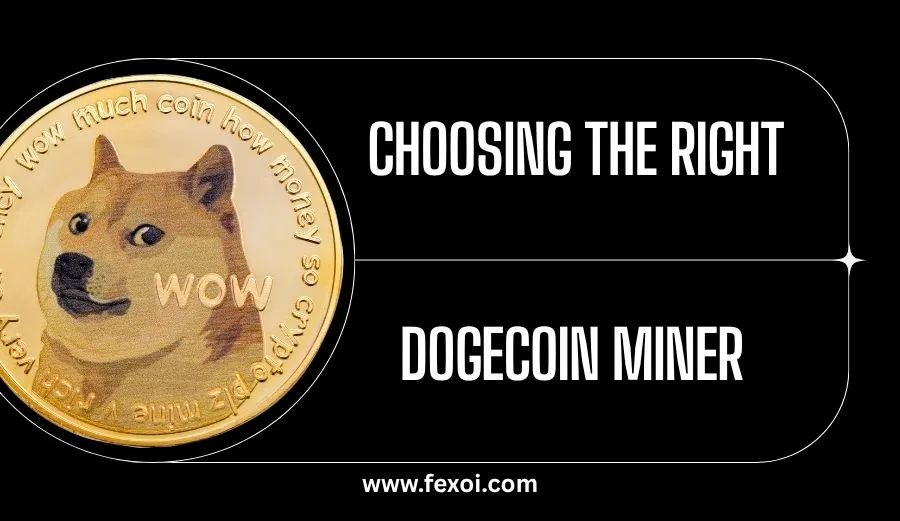Dogecoin has attracted interest from both experienced crypto enthusiasts and newcomers. But for many trying their hand at Dogecoin mining, there’s a common frustration: minimal returns or no profit at all. If you’re a Dogecoin miner who’s not seeing the results you hoped for, this article will help you uncover the potential pitfalls and guide you through better strategies.
What Is Dogecoin Mining?
Dogecoin mining is the process of validating transactions and adding them to the Dogecoin miner blockchain. Miners utilize computing power to solve complex mathematical puzzles. When successful, they’re rewarded with Dogecoins. The process ensures network security and helps verify the integrity of each transaction. Anyone with a capable GPU or CPU can participate in mining, although joining a mining pool is often recommended for more consistent rewards. Dogecoin’s block time is one minute, allowing for faster transaction confirmations compared to many other cryptocurrencies. As a result, it has become a popular choice for those looking to explore crypto mining with fewer barriers to entry.
How It Differs from Bitcoin Mining
While both use proof-of-work algorithms, Dogecoin miner uses Scrypt, making it less resource-intensive than Bitcoin’s SHA-256 algorithm. This makes Dogecoin mining more accessible for beginners.
Why Your Dogecoin Miner Might Be Underperforming
Using Outdated or Underpowered Hardware
Your mining hardware plays a critical role. If you’re using an outdated CPU or low-end GPU, your mining speed is significantly reduced. Not only does this limit your ability to earn Dogecoin, but it can also lead to higher power consumption with minimal return. Investing in capable hardware is essential for efficiency and profitability.
Recommended Hardware for Dogecoin Mining:
- GPU: NVIDIA RTX 3060 or better
- ASIC: Antminer L3++, Innosilicon A4+ LTCMaster
- Modern GPUs offer decent hash rates for beginners, but if you’re serious about mining, ASIC miners offer higher efficiency and faster ROI.
Not Mining in a Pool
Solo mining can be rewarding, but it’s unpredictable. You might go days or weeks without finding a block, making income unreliable. Mining pools pool together the computing power of many miners, providing smaller yet steadier rewards.
Top Dogecoin Mining Pools:
- Aikapool
- Prohashing
- Multipool
Joining a pool helps balance effort with reward and reduces the frustration associated with solo efforts.
Poor Configuration Settings
Incorrect mining settings can lead to system crashes, overheating, or suboptimal performance. Always keep your mining software updated and correctly configured to suit your hardware. Tools like CGMiner and EasyMiner provide user-friendly interfaces and logs for performance tracking.
High Electricity Costs
Electricity is one of the most overlooked yet critical factors in Dogecoin mining profitability. If you’re paying high utility rates, your earnings may be entirely offset.
Tip:
Use energy-efficient hardware and consider mining during off-peak hours if your utility provider offers time-of-use pricing. Solar-powered rigs or renewable energy options can also reduce long-term costs.
Neglecting Regular Maintenance
Mining rigs run continuously, which can lead to overheating, dust accumulation, and hardware wear and tear. Without proper maintenance, you risk system failure and performance drops.
Tip:
Clean your rig every few weeks, ensure good ventilation, and use software to monitor GPU temperatures in real time.

Choosing the Right Dogecoin Miner
ASIC vs. GPU: Which Is Better?
ASIC dogecoin miner are purpose-built for mining and offer higher hash rates and energy efficiency. However, they’re more expensive, noisier, and less flexible, only suitable for specific algorithms like Scrypt.
GPU miners are versatile, affordable, and better suited for beginners or those wanting to mine multiple coins.
Key Specs to Consider:
- Hash rate: Higher hash rates increase your chances of solving blocks.
- Power consumption: Lower wattage saves on electricity costs.
- ROI period: Calculate how long it takes to recover your investment based on hardware cost and projected earnings.
Always evaluate your budget, goals, and electricity costs before deciding on the right Dogecoin miner.
Best Software for Dogecoin Mining
Recommended Mining Software:
- CGMiner
- EasyMiner
- MultiMiner
- CudoMiner
Ensure the software you choose supports Scrypt mining, as Dogecoin relies on this algorithm. These programs offer user-friendly interfaces and allow customization based on your hardware and mining preferences. Some, like CGMiner, are more advanced and suited for experienced miners, while EasyMiner and MultiMiner provide easier setups for beginners.
Is Cloud Mining Worth It?
Cloud mining allows you to mine Dogecoin without owning or maintaining physical hardware.
Pros:
- No upfront hardware investment
- No need to manage or maintain equipment
Cons:
- Typically lower profit margins compared to solo or pool mining
- Potential risks of scams and unreliable providers
If you opt for cloud mining, always choose reputable providers like NiceHash or Genesis Mining to minimize risks and ensure transparency.
Profitability Calculator
Use a Dogecoin mining calculator to estimate potential earnings. Input your hash rate, electricity cost, and hardware efficiency to gauge profitability before investing. These calculators help you understand how much Dogecoin you can realistically mine and whether it’s worth the cost.
Popular Calculators:
- WhatToMine
- CoinWarz
- CryptoCompare
Dogecoin Miner ROI Expectations
Factors Affecting ROI:
- Market price of Dogecoin
- Mining difficulty
- Pool fees
Hardware and electricity costs
Typically, ROI can take anywhere from 6 months to 2 years, depending on your setup and market conditions.
Dogecoin Mining Tips for Better Results
Optimize Power Settings by using efficient power supplies and adjusting GPU power limits to balance performance and energy use. Join active communities such as subreddits like r/dogemining and forums like Bitcointalk to stay updated with the latest tips and troubleshooting advice. Regularly monitor your mining performance using dashboard tools to track hash rates, temperatures, and uptime, helping prevent downtime and hardware damage.
Avoiding Common Dogecoin Mining Scams
Watch out for red flags like promises of guaranteed returns, a lack of transparency, and missing physical address or team details. Protect yourself by enabling two-factor authentication (2FA) on your accounts, thoroughly researching cloud mining providers, and avoiding suspicious links or offers that seem too good to be true. Staying cautious helps secure your investments in this volatile space.
The Future of Dogecoin Mining
Will It Stay Profitable?
As Dogecoin grows in popularity, mining difficulty will naturally increase, making it harder to earn rewards over time. This means miners must stay vigilant and adapt their strategies to maintain profitability. Regularly monitoring market trends, mining difficulty, and Dogecoin’s price fluctuations is essential.
Emerging Trends:
- Eco-friendly mining: More miners are shifting toward sustainable energy sources and energy-efficient hardware to reduce environmental impact and lower electricity costs.
- Merge mining with Litecoin: Dogecoin can be mined simultaneously with Litecoin using merge mining, increasing efficiency and potential rewards for miners.
- Rising popularity of ASICs: ASIC miners designed specifically for Scrypt algorithms continue to improve in performance, making GPU mining less competitive but boosting overall network security and stability.
Staying informed and flexible is key to long-term mining success.
Final Thoughts
Being a Dogecoin miner can be profitable, but only if you’re strategic. By avoiding common mistakes and optimizing your setup, you increase your chances of earning consistent rewards. Keep learning, stay updated, and adjust your approach as the market evolves.







